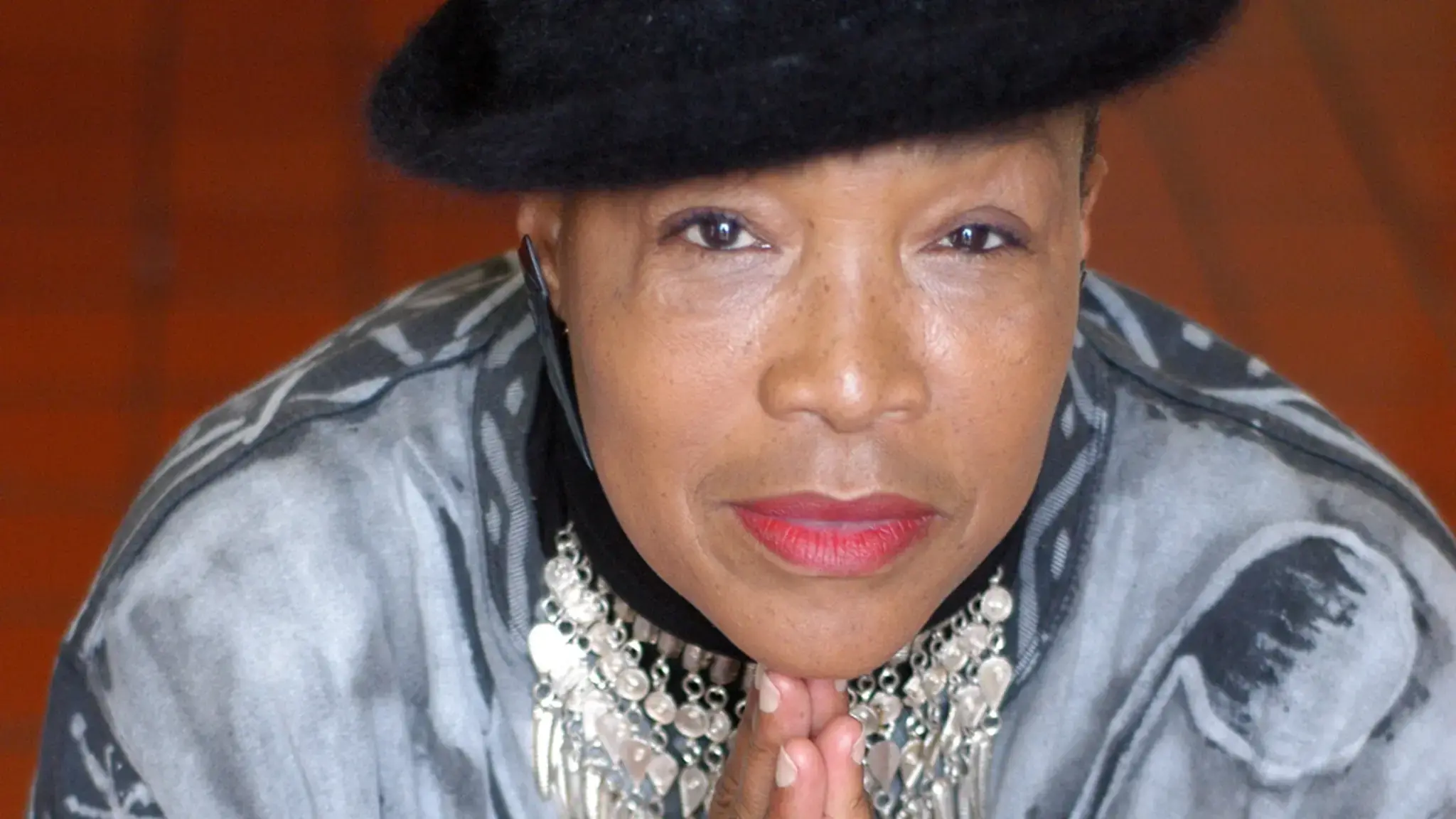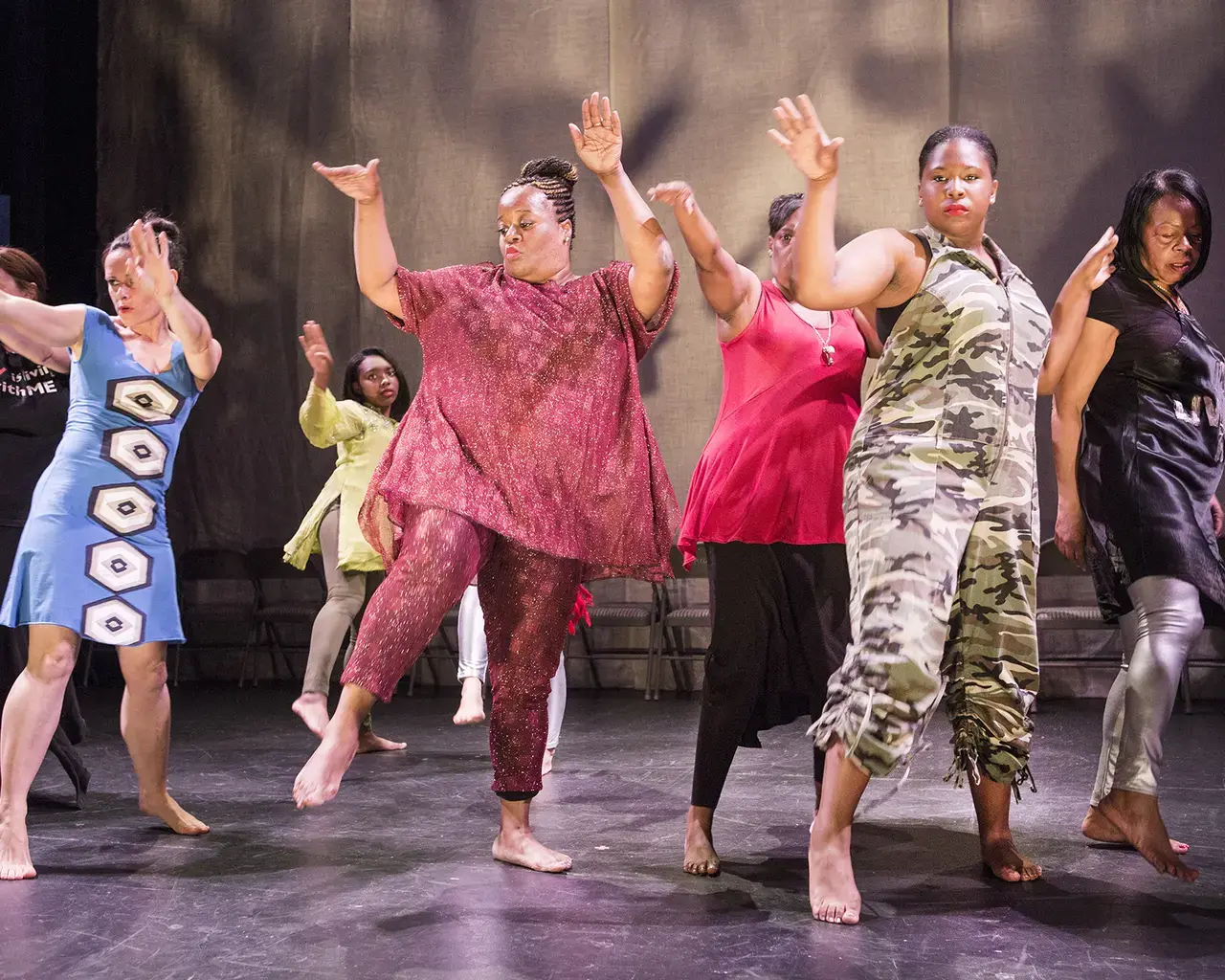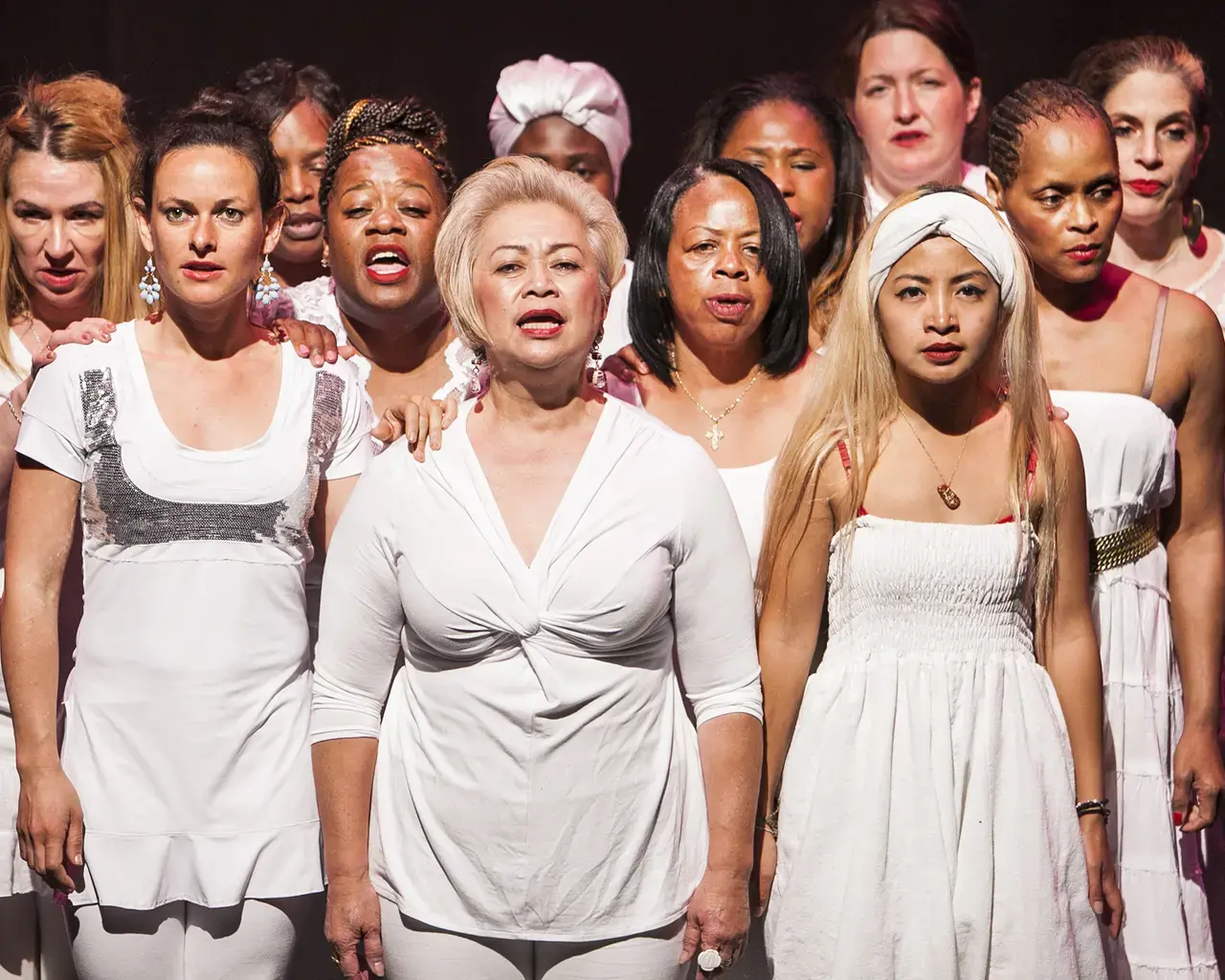Our “Pew Fellow of the Week” series focuses on the artistic lives of our Pew Fellows: their aspirations, influences, and creative challenges.
Based in San Francisco, theater performer, director, teacher, and writer Rhodessa Jones is a Fellow-in-Residence who will begin her one-year residency in Philadelphia next year. Jones (2020) spoke to us about being drawn to art early in life in a family of Black migrant workers, why she makes work for and with other women, and what she hopes to accomplish during her time in Philadelphia. This interview was transcribed from an audio recording and edited for length and clarity.
Since 1979, she has been the co-artistic director of San Francisco performing arts organization Cultural Odyssey. In 1989, she founded The Medea Project, for which she serves as artistic director, developing performance pieces with incarcerated women and women who are HIV-positive. Her solo work includes the Bessie Award-winning Big Butt Girls, Hard Headed Women, which has toured globally.
When did you know you were an artist?
I've always known I was an artist, for whatever the definition of artist meant. What I mean is that all around me, art was constantly being made. As an African American, it was a way to stay alive. My grandmother, my father, my brothers, my mother—amongst them, there was always singing and dancing and telling stories, even telling lies. Anything to get you through the night.
We were migrant workers in America. We would migrate from Florida, where we had a house, to upstate New York, where we eventually bought a farm and lived on a farm. As migrant workers in America, I always loved the romantic idea of living on the outside of the culture.
We were always on the edge of America: picking fruit, picking vegetables, making America's food plates as the way we worked. Part of just being an artist was, on a Saturday night, watching the folks in the camp. My father was the crew leader. There was a camp of people who traveled with us.
We would have to set up camp in many different places, and there'd always be a jukebox. Sometimes there'd even be a nice wooden floor. But there were always stories to tell, and there were always nefarious characters around. I met a lot of Black vaudevillians growing up on the labor camp because the Chitlin’ Circuit had died. And with the death of the Chitlin’ Circuit, a lot of people had no other way to make a living but to go back to the land, back to gathering and harvesting the food that we eat in this country.
So I've always been an artist. And I guess I've always identified as an artist.
What is your daily art-making routine?
My daily art-making routine involves meditation, of course. Sitting with myself, being still, absorbing the energy, the air around me. I live alone, so I spend a lot of time these days examining my position in the world.
I grow beautiful flowers. I make sure that I have a lovely bouquet about, as part of my meditative presentation. I listen to music that speaks to growth. “10 Questions for the Dalai Lama” [by Peter Kater] is one of my favorite pieces of music that I listen to in the mornings. I do listen to jazz as well. I listen to Carmen McRae singing Thelonious Monk, which is one of my favorite pieces of music right now.
I try to walk at least two or three times a week. And simply practicing stillness is a part of my daily art-making routine—writing down my responses to the world around me is a way to begin with a new work. During the pandemic it has been essential that I figured out how to know when to be still and when to move.
What images or things keep you company in the space where you work?
Lots of photographs of my family: my daughter, my granddaughter, my great-grandson, my mother and my father. My brothers’ and sisters’ paintings. Posters. Sculpture. I travel in Africa a lot, so I have lots of African sculpture. I have beautiful materials from Africa that are thrown about everywhere. Another sculpture in my space is of Saint Francis of Assisi.
My hats. I am a hat-wearing woman, so I have lots of hats in my space. They keep me company.
It's about gratitude. I keep images in my space that remind me to be grateful. And to try to be happy, and to feel like I'm a part of the motion that will take us out of this portal and into the next, healthy world.
What was the first work of art that really mattered to you? Did it influence your approach to your work?
Keep in mind that I am a migrant child. When I first saw Romare Bearden, it moved me immensely. As did looking at Rothko in Dallas, Texas, with my brother.
Of course, the pieces of art that mattered most were individuals, watching Nina Simone on television, watching the Supremes, going with my parents to see a live show of James Brown—seeing myself reflected in modern music—and then being a part of the culture in that. Because we were Black people in upstate New York, we were constantly being invited. My sisters and myself, we were invited to sing at the county fairs and Future Farmers of America.
I think all these things influenced my approach to art. It's about integration and including everybody. As well, it has always been very important to me that I was seen, that somehow my story was a part of the landscape of America.











